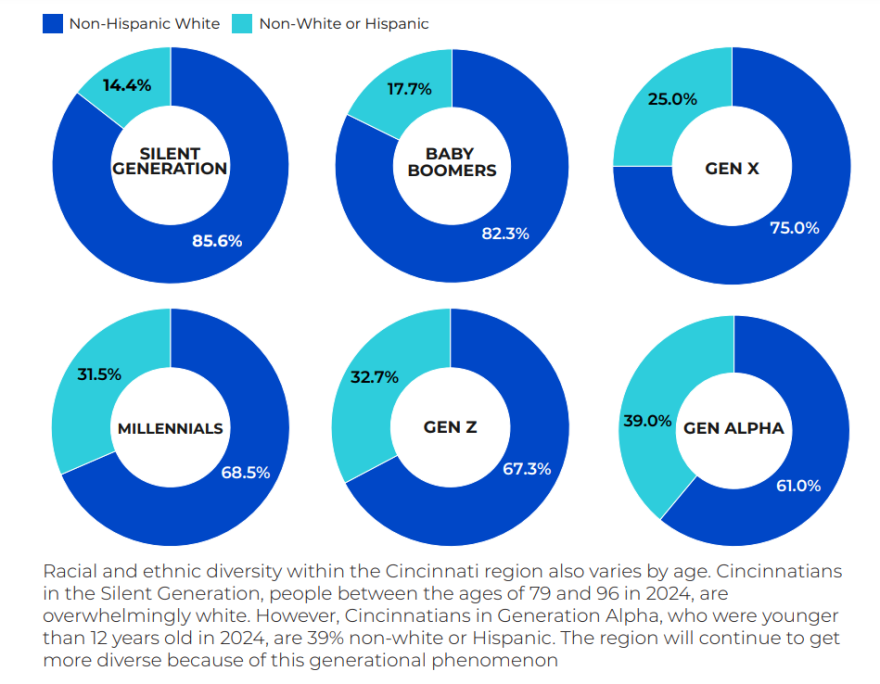Cincinnati ranks in the top half of peer cities for percentage of population that is Gen Z, but the bottom half of peer cities for Millennials. That’s according to the 2024 State of the Region report from the Cincinnati USA Regional Chamber, released Wednesday.
"I think this illustrates that we're doing a good job of bringing people here to educate them ... but we need to focus on retaining that talent in our region," said Brandon Rudd, director of the Chamber's Center for Research and Data.
Rudd calls the report "a glimpse of now and a snapshot of what we could be in the future." It includes sections on population and migration, the economy, community and health indicators, housing, transportation, industry indicators, and arts and culture.
The region includes 15 counties in the Tri-State: five in Ohio (Hamilton, Butler, Warren, Clermont, Brown); seven in Kentucky (Kenton, Boone, Campbell, Grant, Pendleton, Gallatin, Bracken); and three in Indiana (Dearborn, Franklin, Ohio).
Population
The report predicts the region will add about 248,000 new residents by 2050, but that growth will not be evenly distributed — Warren County is expected to grow the most both in terms of actual residents (about 69,300) and percentage increase (about 29%). Hamilton County is expected to add about 43,300 residents, a growth of about 5%.

The report says other possible scenarios include gaining only 15,000 net residents by 2050, if the region faces a tough business climate. Under this "low growth" scenario, Hamilton County would lose almost 8,000 residents.
On the other hand, a "high growth" scenario predicts adding about 600,000 new residents by 2050 if the region "adopts strong policies to encourage economic growth, tourism, and a higher quality of life for residents."
"Under the high growth scenario, we build enough housing for everybody," Rudd said. "We're a welcoming community where people feel like they belong; we have pro-growth policies in place to allow businesses to grow and people to move here."
Demographics
As noted, Cincinnati ranks in the top half of peer cities for percentage of population that is Gen Z, but the bottom half of peer cities for Millennials.
Notably, each generation has become more racially diverse; 85.6% of the Silent Generation is non-Hispanic white, compared to 61% of Gen Alpha.

President and CEO of the Urban League of Greater Southwestern Ohio Christie Kuhns says the region needs more cultural diversity to match population diversity.
"There's lack of entertainment," Kuhns said. "At a certain age you're looking for your mate, so if there isn't folks who are similar to you on culture, you're going to go somewhere else where you have a much higher chance of meeting 'The One.' "
New York City tops the list for the city with the highest net migration to Cincinnati, meaning more people moved to Cincinnati from NYC than vice versa.
Racial disparities
The median Black household in Greater Cincinnati makes more than $40,000 less than the median white household. That's a wider wealth gap than was reported in last year's State of the Region report.
Unemployment is not distributed equally, either: non-Hispanic white residents had a 2.6% unemployment rate, compared to a 6.3% rate for Black residents.

The Urban League's State of Black Cincinnati report has more detail on racial disparities (specific to Cincinnati, not inclusive of the entire region).
Read the full 2024 State of the Region report on the chamber's website here.



